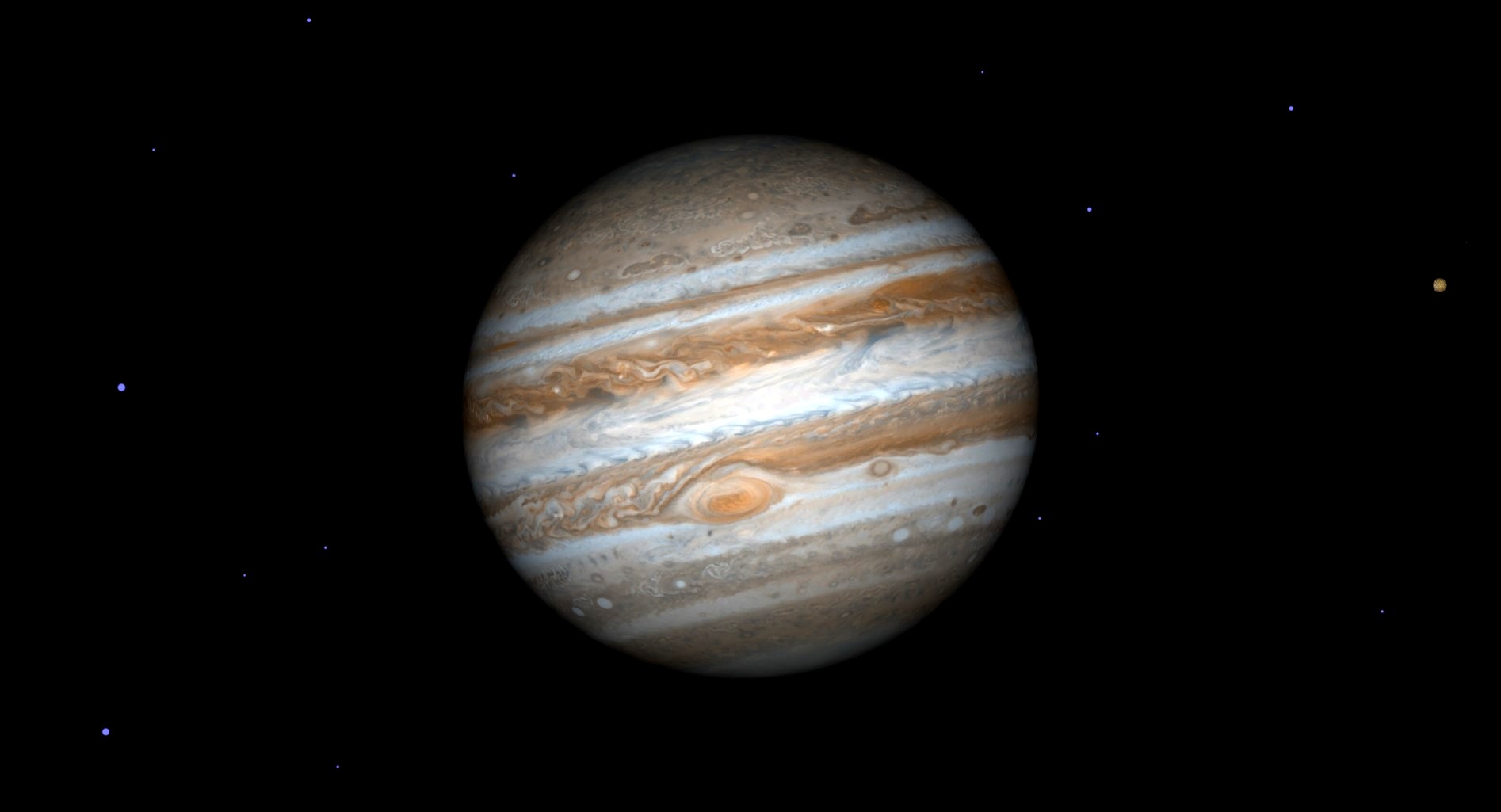See Jupiter at its brightest for 2020 tonight!
The planet reaches opposition today (July 14).

Jupiter will be at its biggest and brightest in the sky tonight (July 14) as the planet reaches opposition, the point in its orbit where it's almost directly opposite the sun in our sky and near its closest approach to Earth.
You can spot Jupiter with the naked eye in the constellation Sagittarius. One of the easiest ways to find the constellation is to use the Summer Triangle asterism. Draw an imaginary line from the star Deneb (in the constellation Cygnus, the swan) and through the star Altair (in Aquila, the eagle) to get to Sagittarius.
Most people in North America will see Sagittarius close to the horizon, so try to move away from city lights and buildings for the best view. Give yourself at least 20 minutes to let your eyes get adjusted to the darkness, and use red filters to cover over any flashlights or light-emitting devices you bring along.
Related: When, where and how to see the planets in the 2020 night sky
Jupiter will shine with a yellow hue in the sky just after sunset, lingering in the sky until dawn, at magnitude -2.7. (Magnitude is a measure of brightness, with negative numbers denoting the brightest objects.) The planet will appear a little brighter than the brightest star in Earth's sky, which is the wintertime Northern Hemisphere star Sirius.
Jupiter will reach its highest point in the sky around midnight local time, moving away from the thick atmosphere of the horizon to let you glimpse the planet at its best.
If you have a pair of binoculars, you can check out the movement of Jupiter's moons, and a telescope will let you spot some of the bands in the atmosphere – as well as, perhaps, the shrinking Great Red Spot.
Breaking space news, the latest updates on rocket launches, skywatching events and more!
Related: The Galilean moons of Jupiter in photos
If you're clouded out tonight or otherwise unable to see the show, there are plenty of opportunities to see Jupiter through the summer.
"Over the weeks following its opposition, Jupiter will reach its highest point in the sky four minutes earlier each night, gradually receding from the pre-dawn morning sky while remaining visible in the evening sky for a few months," the skywatching site In-The-Sky.org said in a statement.
Editor's Note: If you snap a photo of night sky picture and would like to share it with Space.com's readers, send your photos, comments, and your name and location to spacephotos@space.com.
Follow Elizabeth Howell on Twitter @howellspace. Follow us on Twitter @Spacedotcom and on Facebook.

Elizabeth Howell (she/her), Ph.D., was a staff writer in the spaceflight channel between 2022 and 2024 specializing in Canadian space news. She was contributing writer for Space.com for 10 years from 2012 to 2024. Elizabeth's reporting includes multiple exclusives with the White House, leading world coverage about a lost-and-found space tomato on the International Space Station, witnessing five human spaceflight launches on two continents, flying parabolic, working inside a spacesuit, and participating in a simulated Mars mission. Her latest book, "Why Am I Taller?" (ECW Press, 2022) is co-written with astronaut Dave Williams.


